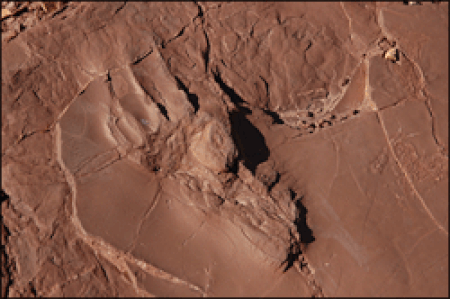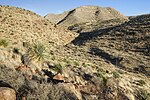Prehistoric Trackways National Monument
2009 establishments in New MexicoBureau of Land Management National MonumentsBureau of Land Management areas in New MexicoFossil parks in the United StatesFossil trackways in the United States ... and 8 more
National Monuments designated by Barack ObamaNational Monuments in New MexicoPaleontology in New MexicoPaleozoic New MexicoPaleozoic lifeProtected areas established in 2009Protected areas of Doña Ana County, New MexicoUnits of the National Landscape Conservation System

Prehistoric Trackways National Monument is a national monument in the Robledo Mountains of Doña Ana County, New Mexico, United States, near the city of Las Cruces. The monument's Paleozoic Era fossils are on 5,255 acres (2,127 ha) of land administered by the Bureau of Land Management. It became the 100th active U.S. national monument when it was designated on March 30, 2009.
Excerpt from the Wikipedia article Prehistoric Trackways National Monument (License: CC BY-SA 3.0, Authors, Images).Prehistoric Trackways National Monument
West Monument Boundary Road,
Geographical coordinates (GPS) Address Nearby Places Show on map
Geographical coordinates (GPS)
| Latitude | Longitude |
|---|---|
| N 32.35 ° | E -106.9 ° |
Address
West Monument Boundary Road
West Monument Boundary Road
88033
New Mexico, United States
Open on Google Maps



